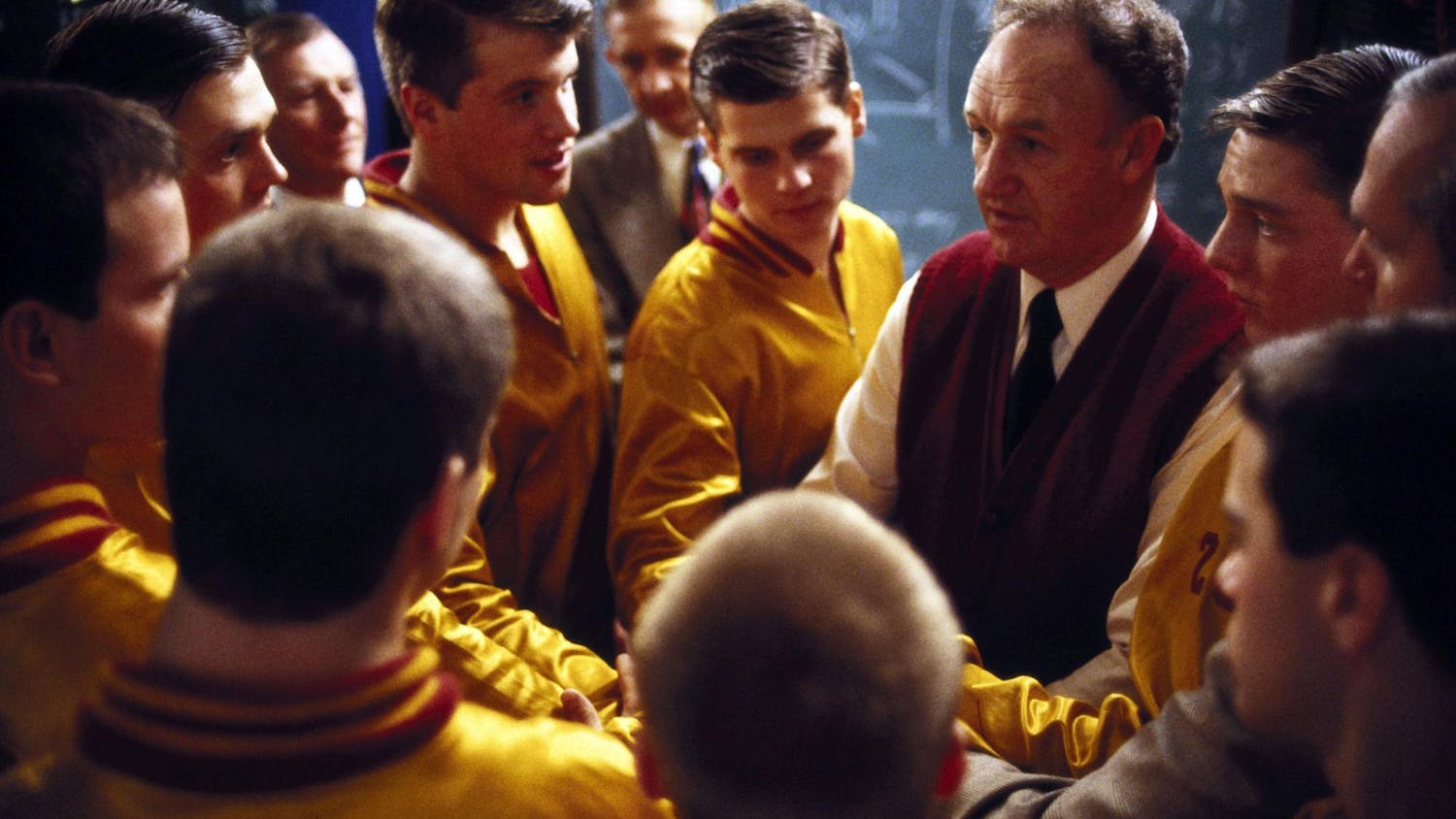Hoosiers, particularly basketball fans, might think they know everything behind the history of IU’s heralded basketball team. However, there’s one book Hoosiers should consider adding to their reading list.
“Getting Open: The Unknown Story of Bill Garrett and the Integration of College Basketball,” by Tom Graham and Rachel Graham Cody, is a well-researched and insightful look into the serious issue of unspoken rules of segregation in Indiana and what it took to break down the walls for talented basketball players such as Garrett.
Garrett’s story begins in Shelbyville, Ind., a town about 40 miles southeast of Indianapolis, where he attended Booker T. Washington Elementary School, a segregated school that had been condemned for a period of time before he was born.
Garrett was born in 1929 and grew up amidst unspoken Midwestern rules of segregation.
Garrett made his way to Shelbyville High School and onto the varsity basketball team, along with several other black students. Shelbyville coach Frank Barnes created controversy among Indiana’s rabidly enthusiastic basketball fans by being the first coach to have three black starters on his team.
Garrett and his teammates rose above the controversy, all the way to the 1947 state basketball championship.
Garrett became a beacon of inspiration for black leaders in Indiana, including Faburn DeFrantz, the executive director of an Indianapolis YMCA.
DeFrantz drove to Bloomington to plead with IU president Herman B Wells and basketball coach Branch McCracken. DeFrantz and others knew Garrett was more than good enough to be on the IU team, and they saw his reserved talent as a means of getting integration to IU basketball, despite the Big Ten’s unspoken “gentleman’s agreement” not to add black players to their teams.
Other smaller colleges throughout Indiana, for example Anderson College to the north, had integrated their basketball teams already. IU’s football team had black members.
Wells and McCracken knew, however, that with the popularity of basketball in Indiana and the funding the University received through the state, they had to step lightly to avoid a huge backslide.
This book deftly points out the inconsistencies in northern race relations. The authors highlight how segregation was an unspoken part of life for people in Indiana – from the banning of blacks at Shelbyville youth clubs to the controversies that arose during the officiating of high school games.
The depth of research for the book – seven years’ worth, Graham said – is an undeniable asset. Readers might be especially interested to learn the opinions and stances of IU leaders of the time, including controversial opinions of IU trustee Ora L. Wildermuth, after whom the gym in the Health, Physical Education, and Recreation building is named.
In April 2007, IDS columnist Andrew Shaffer published a column criticizing the fact that the HPER gym is named after someone who adamantly stood against the integration of IU. Memos in the IU archives from Wildermuth show his reasons for keeping the races separate were based on his belief that mixing of the races would lead to miscegenation.
If there’s a weakness to “Getting Open,” it’s an emphasis on Garrett’s early years in Shelbyville. The book doesn’t begin to discuss race issues at the university level until almost 100 pages into the book, which is only about 200 pages altogether, minus notes.
The whole story is engaging and rich in detail, but readers might begin to wonder when they’re going to hear about IU.
“Getting Open” might be a book with roots in local history, but it provides a broad scope of the times shortly before the Civil Rights Movement.
Graham describes the book as a picture of race relations through basketball, rather than just a basketball story.
“Getting Open” doesn’t end like a feel-good sports movie with a 3-pointer at the last second, but it is a fascinating look into Midwestern history that any Hoosier – born in Indiana or not – should enjoy.
Tom Graham, author of “Getting Open: The Unknown Story of Bill Garrett and the Integration of College Basketball,” was in Bloomington on Thursday to speak about his book. He had a one-on-one interview with the Indiana Daily Student before arriving in town.
Graham was born in Shelbyville, Ind., in 1943. He was surrounded by enthusiastic Shelbyville basketball fans and was strongly affected by the immersion into the culture of basketball fanaticism. Graham has worked for law firms in Washington, D.C., as well as abroad, but has always wanted to write the story of Bill Garrett and the 1947 state basketball championship.
IDS: Tell me a little bit about how Bill Garrett became your obsession.
Graham: I was 4 years old in 1947 when Shelbyville won the state
championship, and my father and my family had season tickets. To a 4-year-old, Shelbyville High School basketball was the biggest thing in the world. I’ve often said, semi-jokingly, that Shelbyville’s winning the state championship in 1947, in my mind, was equivalent to winning World War II. It’s difficult to overstate the impact that had on me as a small child. People didn’t talk about it, but they were proud of the fact that this team that had been derided as the “Black Bears” won the state championship. It never left me, really. I mean, I went far beyond Shelbyville, but increasingly I would ask myself, “What would I really like to do, if I could do whatever I wanted to?” And the answer was always, “I would like to write that story.”
IDS: How does it feel to have a finished product of your obsession?
Graham: It feels wonderful. It wouldn’t have mattered if we had only sold very few books. It wasn’t about that. It was about the story, and it really was a life-changing experience to go back to Shelbyville and have black people thank us for having given a voice to what they went through. And to have whites say, “I was so oblivious to it.” It really is an extraordinary source of satisfaction.
IDS: What was it like to work with your daughter on “Getting Open?”
Graham: It was a tremendous experience. It wasn’t all easy, because we had to learn to work together as colleagues instead of as father and daughter, so it had its strains and moments as might be expected. But by and large, it was just a tremendous experience for both of us.
IDS: What were the biggest challenges for you in writing this book?
Graham: Time, for one. I was working full time during most of it. We wrote it over seven years from 1998 to the end of 2005. I was practicing law in Washington at the time. The fact that some of the key people were no longer alive – it would have been really nice to talk to Frank Barnes, for example. Rachel did, on that point, track down Faburn DeFrantz’s son in Indianapolis who had an unpublished autobiography. He wouldn’t let it out of his house, but he let Rachel sit for four or five days in his kitchen, making notes on it.
IDS: What do you want people to take from this book?
Graham: We very much did not want it to be seen as a basketball book. We saw it at least equal to basketball as a story of race relations of the time and a story of local history. But on the race relations, the kind that we described in the book, the kind that existed in Shelbyville and towns like it all the way across the northern United States, small towns especially, have been very little recognized. There was segregation in the south, which was by law and in-your-face, and then there was the kind that was in the big cities, where blacks lived just in separate areas. There was a third kind, which was the kind in Shelbyville and all across the country, that blacks and whites lived together essentially and intermingled every day, but lived entirely separate lives, and nobody acknowledged that towns were segregated.
IDS: Do you believe Garrett was the “perfect man” for integrating college basketball?
Graham: Yes, I actually do. I mean, as we sort of say in the book, he had the qualities that were needed at the time, which was this sort of quiet competence and the ability to take it without reacting. That was what was needed, because if the person had been a hothead, or less able to withstand the taunting and the things that Garrett had to take, it might have risked setting the whole thing back a number of years because it was the way the times were.
Novel sheds insight on IU basketball, segregation
Get stories like this in your inbox
Subscribe





